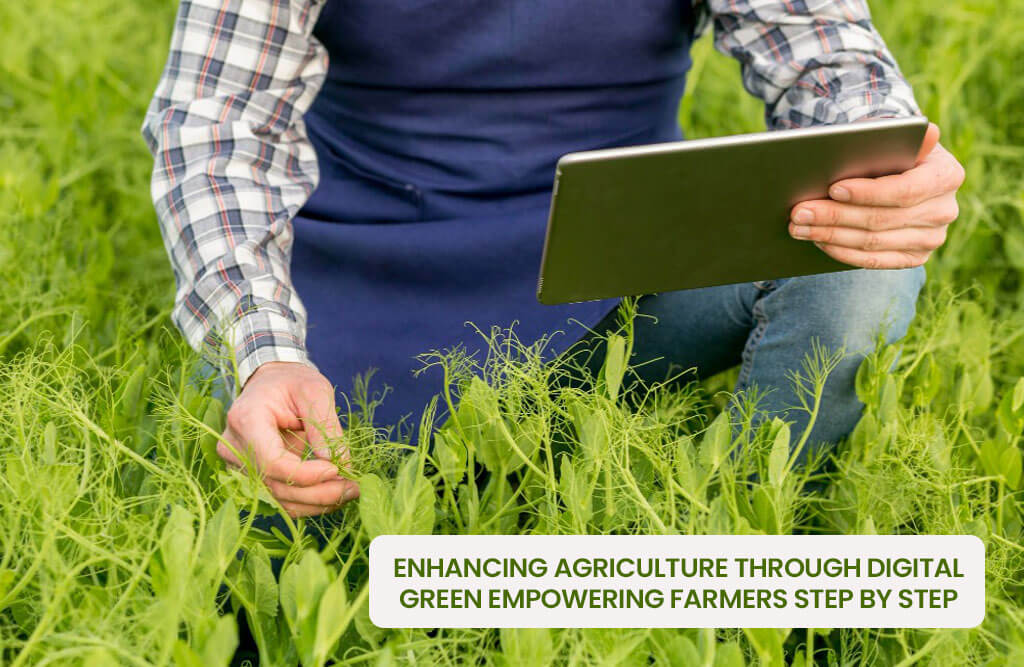
Agriculture, an integral part of our country's economic policy, is now entering a new phase - Digital Agriculture or Digital Green Farming. It involves a new approach for farmers, utilizing advanced technological solutions to bring improvements in the agricultural sector and enhance their profitability. In this article, we will discuss the significance of Digital Green Agriculture, its benefits, and the improvements it brings to the field.
What is Digital Green Agriculture?
Digital Green Agriculture is an advanced technological perspective wherein farmers have the possibility to use new and improved technical methods. It involves the utilization of various digital tools, sensors, and technical solutions that help farmers monitor and improve the conditions of their fields.
Digital Green Agriculture involves the use of various technical solutions that provide farmers with information about the status of their fields. This can include sensors, drones, quality monitoring technology, and agricultural applications. By combining these technical solutions, farmers can manage their land conditions, monitor the health of crops, and optimize the use of appropriate fertilizers.
Improved Productivity : Digital Green Agriculture enables farmers to understand and perform their duties at the right time, leading to increased productivity and Water-Scarce Regions.
Optimal Use of Fertilizers : Through sensors, farmers can monitor the water status of their fields and ensure the proper use of fertilizers, resulting in increased productivity.
Enhanced Connectivity : The use of Digital Green Agriculture allows farmers to establish connections with local and international markets, potentially improving their economic situation.
Support for Health and Environment : The technologies used in Digital Green Agriculture ensure proper usage of fertilizers, reducing environmental damage and maintaining the quality of food products.
Lack of Technical Resources : A significant portion of farmers is still grappling with the shortage of technical resources. If less capable farmers do not benefit from these improvements, it could lead to further inequality in their situation.
Lack of Education and Training : Understanding the benefits of Digital Green Agriculture requires farmers to have more education and training. If there is a shortage in this aspect, it might be challenging for them to use these technologies effectively.
Challenges in Fair Pricing : The demand for technical resources related to Digital Green Agriculture may increase, leading to higher costs. This can become a financial burden for farmers.
Changing Legal Perspectives : Changing legal perspectives are crucial for the internalization of Digital Green Agriculture. Some farmers may find it difficult to accept these changes.
Isolation of Less Capable Farmers : The benefits of Digital Green Agriculture may only be accessible to more capable farmers, leading to the isolation of less capable farmers. This can result in additional challenges for them.
Increased Use of Sensors and Technology : Further integration of sensors and technology in Digital Green Agriculture can provide farmers with even better insights into the conditions of their fields.
Development of Agricultural Applications : The development of user-friendly and collaborative agricultural applications can provide farmers with more conveniences and utilities.
Education and Training : Providing education and training on the benefits of Digital Green Agriculture and the proper use of technical resources is crucial for farmers.
Government Support : Governments should formulate policies and schemes to promote Digital Green Agriculture, providing support for farmers to access technical resources.
Conclusion: Supporting Digital Green Agriculture can be a crucial step in the direction of improvement in our country's agricultural sector. It offers farmers the potential for increased productivity, better profits, and an environmentally sustainable way of farming. It is essential for all of us to collectively take steps in this direction so that our farmer brothers and sisters can benefit fully from improved technical solutions, making our agriculture sector reliable, safe, and economically vibrant.